PREVIEW: A2CAF: The Comic Show That Wants To Change Your Life
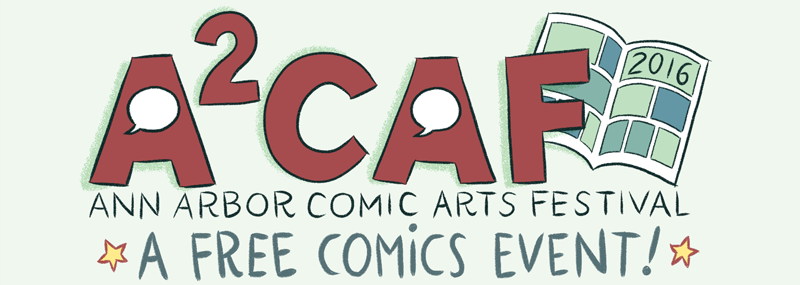
These days, comics are everywhere. Superheroes dominate the silver screen. Graphic novels burn up the best-seller lists. And of course, comic-cons are a nationwide craze.
But graphic storytelling is about more than comic commercialism. And this weekend, the Ann Arbor District Library is presenting a lineup of some of the most popular cartoonists with young readers and a slew of local talent to deliver an event more about passion for comics than profit: the Ann Arbor Comic Arts Festival.
Taking place Saturday and Sunday at the library’s main branch, A2CAF (as the show is known for short) is the continuation of the popular event formerly known as Kids Read Comics. The 2016 edition of this free festival not only brings over 50 comic creators to its "artist's alley" area to share their work with school-aged readers and their families – it will also host dozens of hands-on creative workshops all over downtown. And in a special Friday event, the show will welcome librarians and teachers to meet with the talent so they can boost their own comics bona fides. All in all, the guests and programming will work to build a love of the medium in all its attendees.
"Our ethos is 'A life can be changed by comics.' Mine was," explains A2CAF co-founder and organizer Dan Mishkin. And he should know. The Michigan-based writer spent years crafting stories for DC Comics including runs with Superman and Wonder Woman in addition to being co-creator of heroes like Blue Devil and Amethyst, Princess of Gemworld (which was recently adapted as a series on Cartoon Network). The A2CAF team hopes to inspire a new generation of comic lovers. As Mishkin says, "You don't have to be a professional for your mind to be opened up by comics."
Getting the community excited about the medium starts with the all-star lineup of cartoonist and writers. This year, the keynote presenters will be the creator of the Newbery Honor-winning graphic novel El Deafo Cece Bell and her husband Tom Angleberger who is the mastermind behind the Star Wars-themed Origami Yoda series, amongst other books. Joining them on the show floor will be acclaimed artists like Kazu Kibuishi (Scholastic's popular Amulet series), Ben Hatke (Zita The Spacegirl), and the team behind Oni Press's hilarious new comic BroBots, J. Torres and Sean Dove.
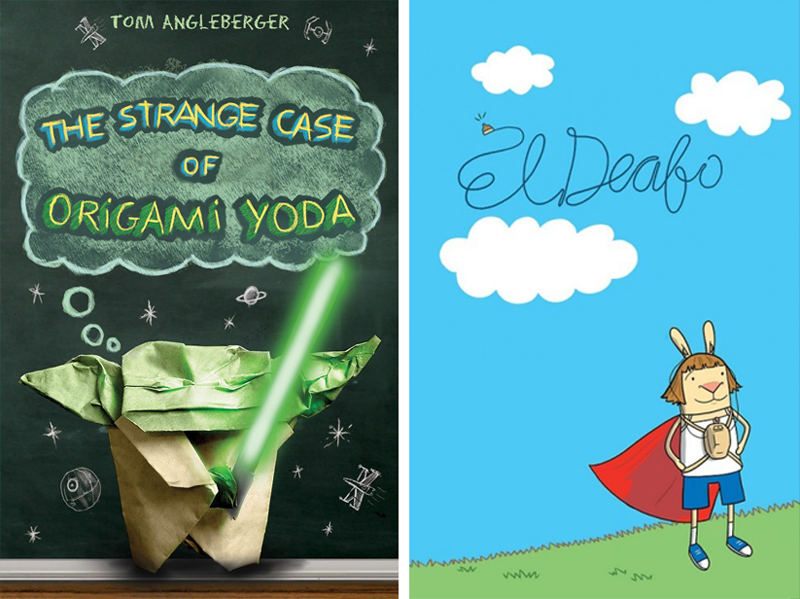
"These are all people who are committed to young readers and committed to comics, who you can see in their every move that they love this artform," Mishkin says. "We don't have the people who just sit behind their table and hope someone will talk to them. We also don't have the people who think that they're only there to sell their books. That's not our reason for being. Our reason is to instill a love of comics."
The organizer is also keenly aware of how much local flavor has been added to the show over the years. "Maintaining a variety is something that's really important to us, and it involves finding local people and being responsive to that," he explains. "We're always refining the mix of guests. It's not just about the professionals. It's about both the New York Times bestseller and the local person who's just starting out. You'll see a lot of Southeast Michigan and mid-Michigan creators who have a day job, but they're doing their webcomic on the side. It works out really well for them and for us to give them a showcase."
But as all artists presenting their wares at the show get to table for free, the organizers have an expectation for what the talent bring to the festival. "You need to represent what we're all about. I only half-jokingly say 'We don't care if you sell anything at your table.' Because for us, it's much more important that the artists engage with kids and teenagers and parents and teachers and librarians so that the passion for comics comes across."
That love extends into A2CAF's second major feature: its wide range of programming. Across the weekend, the library itself will hold comics-making workshops, a ceremony for the kids-focused Dwayne McDuffie Award, and signings for some of the biggest talent on hand. And on Friday, the A2Inkubate unconference will present educators and librarians with a chance to collaborate on methods for bringing comics to their students. But beyond that, programming will also pop up across downtown at spots including the Vault of Midnight comics shop, the 826 Ann Arbor Robot Supply & Repair storefront, and the Ann Arbor Art Center.
"It just makes sense to share the event with organizations with whom we share a mission. We're all in a Venn diagram of these things," Mishkin says. "It's really about turning young people onto having a passion for comics and doing it in a non-commercial setting with a lot of hands-on experience. During the show we're really, really hands-on. It's all about getting kids and teens to learn how to make comics. [Local cartoonist] Matt Feazell has his wonderful 'How To Make A Mini Comic' 90-minute workshop, which is so great, and there are other things that are geared towards different levels of ability. Some are geared towards storytelling, but one of the great revelations about doing these workshops is that kids are not inhibited about drawing. They just go ahead and do it.
"We're very much focused on hands-on workshops, and we also have programming that fits into the category of 'spectacle.' So if you're shy or somewhat inhibited, you can sit in an audience and watch artists compete with each other as they draw improvisationally. You can even shout out suggestions for what they can draw. And it always turns out that the kids that moms and dads think are inhibited get really into shouting out ideas for the cartoonists. We keep it fun, and there's a low barrier to participation."
That idea of an easy path into comics is what started the show now known as A2CAF. In 2009, the nonprofit called Kids Read Comics that runs the show launched their first event at the Chelsea District Library. And in 2016, the shift in name from Kids Read Comics to Ann Arbor Comic Arts Festival represents a fulfillment of the team's mission. "I think the change in name means very, very little about [any kind of change in] the character of the show. It's an attempt to better state what we've been about all along," Mishkin explains.
For those curious about the festival's shift, the organizer explains that one key element of the previous iteration wasn't working. "Teenagers don't like being called 'kids.' With a distance from being a kid or a teenager myself, I failed to see that there was going to be an off-putting message in the word 'kids' for some of the people we really wanted to bring into the show. It was never our intention to say that teenagers shouldn't be involved. It was very much our intention that they should be there. They should be there to find really cool stuff, but if the name pushes them away, that's a big problem.
"The word 'Festival' instead of 'Convention' means you're not thinking about more 'adult' comics. You're thinking about joy."
Kiel Phegley is an Ann Arbor based writer, and teacher. His work has been published by CBR, Wizard Magazine, Publishers Weekly, Marvel Magazines, MTV Blogs, and many other print and web outlets.
A2CAF takes place at the AADL's main branch at 343 Fifth Avenue on Saturday, June 18 from 11:00 AM to 5:30 PM and on Sunday, June 19 from 12:30 to 5:30 PM. For more info on the show and Friday's A2Inkubate conference, check out A2CAF.com.
Preview: 2016 Allied Media Conference: Holistic Solutions for a More Just and Creative World
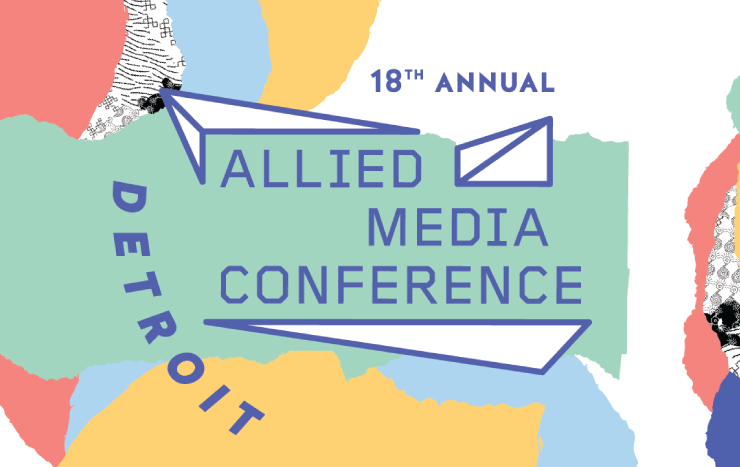
The awesomely expansive 2016 Allied Media Conference will be held in Detroit this year and aims to “bring together a vibrant and diverse community of people using media to incite change: filmmakers, radio producers, technologists, youth organizers, writers, entrepreneurs, musicians, dancers, and artists.” The content of the conference is diverse too, including workshops, shows, and dance parties.
I interviewed Morgan Willis, Program Director of the AMC, about what we can expect from this year’s conference.
Q: You talk about AMC as a collaboratively-designed conference. Can you give a sense of the number and scope of collaborators who have worked on this year's event?
A: The Allied Media Conference is created each year through the passionate contributions of hundreds of coordinators, presenters, and volunteers. The AMC organizing process has been developed from an iterative cycle of feedback and learning between AMC participants and organizers. Through trial and error, survey and response, the organizing process is a continuous work in progress.
This year we have 60+ volunteer coordinators of the 28 different tracks, practice spaces, and network gatherings at the conference. We also have approximately 10 full time and part time staff members that work on the conference, as well as an advisory board of nine intergenerational, long-time AMC participants. We share the conference organizing process through our zines “How We Organize the AMC” and the “AMC Presenter Guidelines.”
Q: Who do you hope to see at AMC?
A: The AMC is a conference that is excited to center participants who live at the margins of conventional conference spaces: immigrants, youth, elders, black and brown folks, queer folks, parents, and others, while remaining open to our vast network of participants across all identities and spectrums. We hope to see first time AMCers, returning participants, Detroiters and media-makers from all over the continent.
Q: How does being situated in Detroit influence the conference?
A: This year will be the AMC’s 10th anniversary of being held in Detroit! Detroit is important as a source of innovative, collaborative, low-resource solutions. Detroit gives the conference a sense of place, just as each of the conference participants bring their own sense of place with them to the conference. Detroiters are also a significant percentage of our coordinators, participants, presenters and attendees.
Our offsite tours and field trips allow participants to see a variety of grassroots media-based organizing initiatives and experience different parts of the city that they may not know about or have access to. One of the most popular tours that is back this year is “From Growing Our Economy to Growing Our Souls” which explores Detroit history and emerging visionary organizing, led by Rich Feldman of the Boggs Center. Other tours will explore urban farming, “green” infrastructure, the Motown United Sound Recording Studio, and more unique places and initiatives in Detroit.
Q: Any tips for navigating the conference for newbies? How about return visitors?
A: As the AMC continues to grow, we hope to ensure that it is a welcoming space for first timers while also cultivating the intimacy and network building that many returning AMCers value so much. This year we will be offering “homeroom” sessions for first timers, hosted by returning AMCers who will help orient first timers to the AMC and offer best practices for navigating through the conference. We will also be sharing a list of “10 Things to Know as an AMC First Timer” on our website (alliedmedia.org/amc) so stay tuned!
One thing we always emphasize to both newbies and returning visitors is to plan your schedule in advance. We just released the online schedule and we highly recommend that attendees read through the 250+ sessions to get a feeling for what you’re most interested in before you arrive. This will also help you identify people and organizations you’d like to connect with so you can grow your network and build long lasting relationships.
Q: What are you personally looking forward to in this year's conference?
A: The Opening Ceremony is always a highlight! This year, through a partnership with the Detroit Institute of Arts museum, we will host the Opening Ceremony inside the beautiful Detroit Film Theater, which has double the capacity of our previous venue. The event is produced by Tunde Olaniran and will bring together performers, activists, and live music as a celebration of the powerful wave of creative movement-building happening across the country.
I’m also especially excited to see the evolution of workshops from last year into tracks (series of multiple workshops) this year, like the “Black Death Mixtape” session, which has expanded into the “Black Survival Mixtape” track. And I love the return of tracks and network gatherings focused on important topics such as climate resilience and disability justice.
We will also be hosting several community dinners this year, which are a way for attendees to meet and connect over affordable, delicious, and locally sourced food. I’m especially looking forward to the Saturday night community dinner, “Bil Afiya: A Community Feast” at Cass Corridor Commons!
Anna Prushinskaya is a writer based in Ann Arbor, Michigan.
The 18th Allied Media Conference takes place June 16 - 19, 2016. AMC offers housing, registration, childcare information, and more online. Registration is on a sliding scale from $75-$500.
Review: Highlights from the Hop

A rainy and colder-than-typical May Saturday didn’t stop people from checking out the Westside art scene. Ann Arbor is home to many artists in hiding. Bet you didn’t know that your neighbor moonlights as an artist! The Westside Art Hop is your chance to realize that art is all around as you stroll through the Old West Side of Ann Arbor with leisurely stops in homes, studios, porches, and yards. It happens twice each year, once in May and again in December. You'll find painting, photography, glass, metal and wood sculpture, jewelry, cards, mosaics, fiber arts, and crafts. There really is something for everyone, ranging from reasonably priced objects for daily use to museum quality pieces.
Larry and Lucie Nisson are well known advocates for the arts in Ann Arbor. If you walked by or interacted with the Pop•X event at Liberty Square last October, you’ve encountered one of the manifestations of their advocacy. It should come as no surprise to find that the Nissons helped bring about the Westside Art Hop as well. At its inception in 2012, the Art Hop featured 4 venues featuring 13 artists. The hop has grown to 11 venues and nearly 40 artists displaying their work. Conceived of as a neighborhood event designed to support local artists and provide a new slice to the Ann Arbor art scene, the Art Hop unambiguously frames artists as members of the community and gives the community a chance to support local arts.
The art advocates are artists themselves, and the work of both Nissans were on display at the Art Hop. Larry’s glass art was a collection of wonderfully organic sculptures that used light and gravity as a dancing partner, as well as drinking glasses composed of dream-like swirls of colors and patterns.

Lucy Nisson’s mosaics offered abstract and playful interactions between shape and color, but also some representational images that used texture and depth to invite a deeper investigation. At every turn of a corner one found more mosaic and glass art integrated into the home. Their backsplash was created by Lucie. They drink from Larry’s glasses. Their art isn’t adornment, it is a fully integrated part of their lifestyles.
Oran Hesterman’s work was shown at the Nisson’s home. By day, Hesterman is president and CEO of Fair Food Network, a national nonprofit that increases access to healthy food in underserved communities. By night he is a potter. His work is functional – bowls, vases, and mugs – meant for daily use. Hesterman has been a potter since he was 16 and realized that he had a talent for centering clay on the potter’s wheel. He and his wife Lucinda Kurtz collaborate on some of the pieces, her beadwork embellishes his designs.
Hallie Levine’s copper and enamel jewelry was shown at Gretchen’s House on Mt. Vernon Avenue. Her delicate looking jewelry consists of flat, organic shapes cut from copper and enameled in smooth muted tones. Many of her pieces are also embellished with subtle textures and delicate line pattern designs.
In front of Gretchen's House, and sheltered from the rain by a tent was Kim Ensch. Her layered paper and fiber collages create dreamlike landscapes with hidden messages and meanings. If you look closely, you can find faces and messages hidden within the organic lines. The tree imagery might give one the sense of being rooted in the family or stuck in the past.

Sharon Linden, a glass artist, was also showing her work at Gretchen’s House. She makes custom stained glass windows, which you may have seen if you’ve ever visited Boot Jack Tavern in Manitou Beach, Michigan. Her wonderful window design for the tavern incorporates Northern Michigan copper as the leaves of the trees. Linden was selling beautiful glass wind chimes made of pieces leftover from her larger stained glass works.
Across the street from Gretchen’s House, Sue Fecteau was set up under a tent in the rain with Sue’s Flying Fish. Fecteau creates Flying-Fish-on-a-stick and colorful mobiles to liven up your home and garden. Liz Davis, whom many of you may recognize from Old Town, was selling her prints on Liberty. Totally a People in Your Neighborhood moment.
If you missed the Spring Westside Art Hop, don’t fret! Another one is happening this December. Be sure to bookmark their website or follow them on Facebook to get the exact date and time in the months to come.
Anne Drozd is a Production Librarian at the Ann Arbor District Library
The 8th Westside Art Hop was Saturday, May 14, 2016 from 11-5 pm in the Old West Side of Ann Arbor. Mark your calendar for the next one in December!
Review: My First Time at Motor City Comic Con
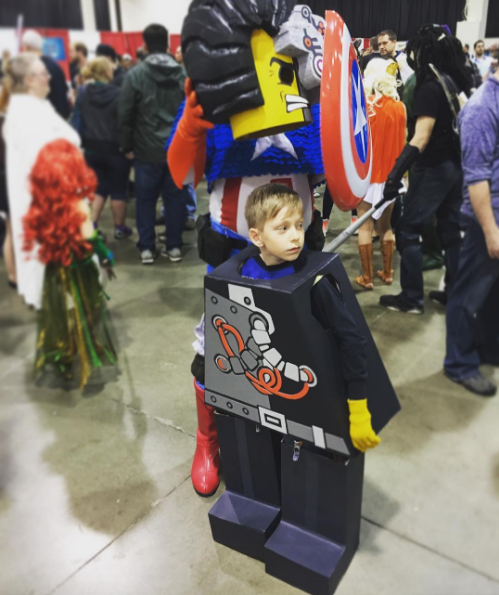
Comic fans and cosplayers swarmed Motor City Comic Con this past weekend in Novi. The event draws tens of thousands of people and features elaborate costumes, comic book and art sales, and the opportunity to meet celebrities from various TV shows and movies of the past seventy years. Although the only comic books that I grew up with were about Betty and Veronica fighting over Archie, and I only know superheroes from the Avengers movies, I gamely dressed as Captain America and went to this year’s Comic Con to see what it was all about.
Even attendees who are more familiar with the comics world than I are often most excited to see the fantastic cosplays (comic con abbreviation for “costume play”) that people create to wear to the convention. For me, people watching and admiring the elaborate costumes of my fellow CC participants was definitely the best part, too. Although I wasn’t able to recognize some of the more obscure characters, the time and effort that went into many of the costumes was awesome to see.
Of course, there were lots of Harley Quinns, Game of Thrones characters (particularly Daenarys), and Captain Americas — my DIY costume paled in comparison to the people in full vintage Army gear carrying the original Captain shield — but there were also a number of female Lokis, a team of people dressed as Fallout fighters, and someone who we initially thought was Prince Robot from the Saga series, but turned out to be from the webcomic RGB Property of Hate. Not all the costumes were comics or gaming related, either. Two men were dressed as Tom Cruise and Jack Nicholson, seemingly for no other reason than that they looked shockingly like the two actors. The open, welcoming atmosphere is one of the best parts of Comic Con; people were more than happy to pose for photos and strike up conversations with one another about their costumes. People staged lightsaber and bow and arrow battles, Dr. Whos posed with blue TARDISes, and Storm Troopers and Red Shirts together bemoaned their laughingly quick and easy deaths.
MCCC is also a mecca for people seeking — of course — comic books. The cavernous space in which the convention is held was over half-filled with aisles of comic book vendors, selling issues ranging from $1.00 for four to over $500 for a single rare back issue of a Batman comic. To truly peruse all the comic book stalls would require spending the entire weekend at MCCC… and even then one might feel rushed. I was a particular fan of the art booths at the festival as well. Dozens of artists—including local artists Jeremy Wheeler and Jason Gibner—showcased their art in various mediums. The art often featured unique interpretations of various well-known characters and emblems from comics and films, and included hand-sewn Chewbacca puppets, blown-glass Game of Thrones dragon eggs, steampunk pocket watches and paintings and posters of all types. Oddly, I even acquired a 1970s print of the state of Michigan with elaborate watercolor-esque images of various Michigan-related things surrounding it, so even for those of us who weren’t necessarily there for anything comic-related, there was worthwhile shopping!
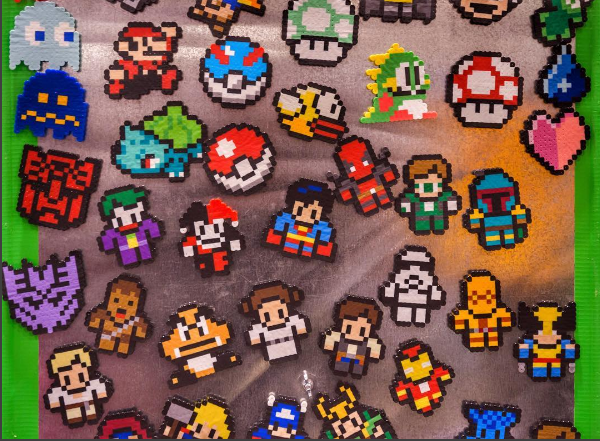
One of the bleak areas of the convention was actually the portion where one could wait in line to meet celebrities. Aside from the exorbitant price to have a minute-long conversation with any one celebrity, many of the more obscure people sat forlornly as no one approached their table. Sure, there were long lines for Lena Headey (of Queen Cersei fame), but it was depressing to see people like Tara Reid and Adam West sitting alone for hours as people wandered past without giving them a second glance. It was almost surreal to walk along the empty aisles, while the “stars” sat about 30 feet back from the main thoroughfare against a backdrop of white curtains staring disinterestedly into space, guarded unnecessarily by bored-looking security personnel in neon vests. I escaped that portion of the convention as quickly as I could.
Overall, I was surprised and pleased by how much fun I — a first-time attendee at a comics convention who really doesn’t know much about comics — had at Motor City Comic Con. If nothing else, the people watching is truly worth the price of the ticket. I’m already planning my cosplay for next year. Hopefully it involves wings.
Elizabeth Pearce is a Library Technician at the Ann Arbor District Library. Captain America is her favorite Avenger.
Motor City Comic Con happens each May at the Suburban Collection Showplace in Novi. Although the con is over for this year, the organizers host other smaller conventions and shows throughout the year.
Review: Abstraction and Reality in Seibren Versteeg's 'Like II' at UMMA
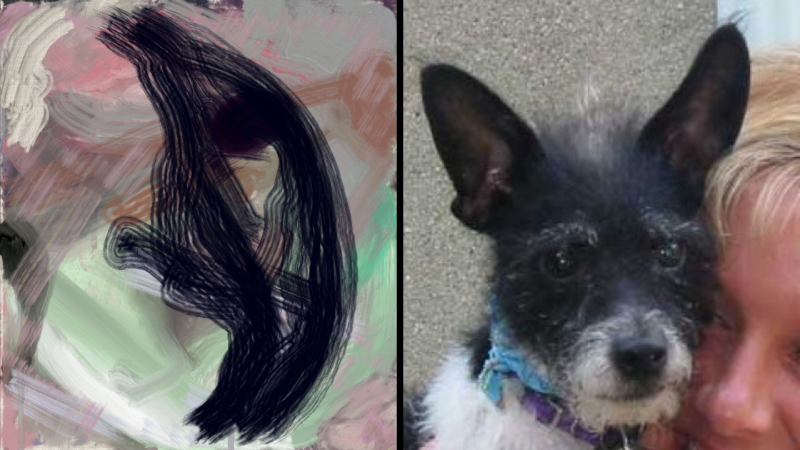
A new exhibit at the University of Michigan Museum of Art is deceptively simple at first. As viewers enter the media room to see Siebren Versteeg’s Like II, all that one sees are three screens propped against the far wall. A computer generated algorithm slowly adds color to the screen on the far right. Stay in the room long enough, and the two screens on the left will change from a blank white to display an image. What’s going on here, exactly?
Brooklyn-based Versteeg created Like II to explore the concept of abstraction, but in the reverse of the sense that we usually explore it. As the computer “paints” an abstract image on the right, that image is uploaded every 60 seconds to Google’s “search by image” feature, and images that most closely match what has been created by the computer are displayed on the left two screens. Sometimes, they match shockingly well. Other times, it takes viewers a few moments to pick out what from the original piece made Google choose the images that are on display—maybe it was a splash of red in the upper right-hand corner, or a bright green area along the bottom of the frame. So, reality is being found through an image search that results from the abstraction of a code painting a random image.
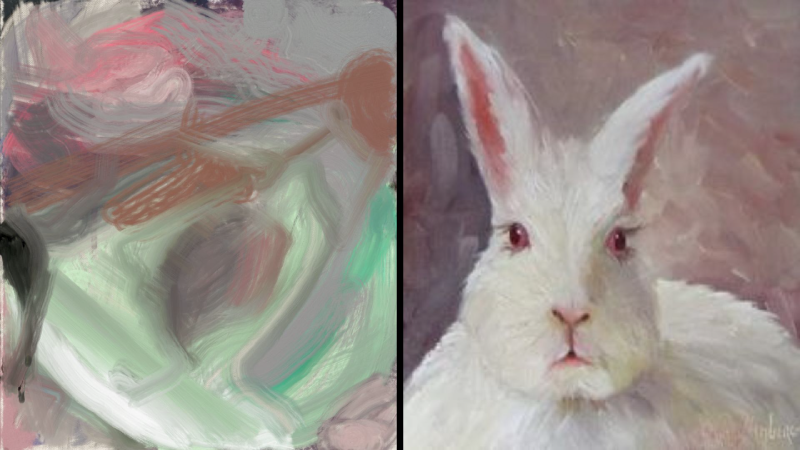
This piece is interesting because it is never the same: sure, sometimes the Google image search pulls the same images from the depths of the Internet a few rounds in a row, but throughout this the algorithm has been adding subtle changes to the original piece. There is truly constant motion. It’s especially fascinating because Versteeg really has little to do with what people actually see: he created the concept for this art piece, but, as he says, “As the nature of the images presented by the work is random, the artist assumes both all and no responsibility for the presence and content.”
Although Like II is technically a single piece of art, it’s one that visitors to the museum can spend a lot of time viewing without losing interest… and can even revisit more than once to see what has changed.
Elizabeth Pearce is a Library Technician at the Ann Arbor District Library.
This unique installment is a treat to have here in Ann Arbor and is on view at the University of Michigan Museum of Art's Media Gallery through July 24, 2016.
Review: Leisure & Luxury at the Kelsey Museum

The University of Michigan Kelsey Museum of Anthropology’s Leisure & Luxury in the Age of Nero: The Villas of Oplontis near Pompeii has everything going for it that a supremely superior museology project can have going for it. It’s a remarkable detective story thousands of years in the making, complete with bona fide top-notch investigators. And, not the least, it is a visual feast for the gallery browser who is willing to take the time to investigate the proceedings at hand.
As Kelsey Curator Elaine K. Gazda tells us, the exhibit “explores the lavish lifestyle and economic interests of ancient Rome’s wealthiest citizens from the time of Julius Caesar (around 50 BC) to the eruption of Mount Vesuvius AD 79. On view are spectacular marble sculptures and wall paintings from an enormous luxury villa that may once have belonged to the Roman empress Poppaea, second wife of Nero."
“In contrast,” continues Gazda, “objects from a nearby commercial complex show how wine is bottled and traded. It was also here that 54 people died during the eruption, several of them carrying gold jewelry and coins. Disparities of wealth and social class evident in these two establishments raise questions about the life of leisure and luxury in ancient Pompeii—questions that were as vital in antiquity as they are today.”
This succinct synopsis pretty much covers the territory of the exhibition, but it’s the hard-earned work on display that makes this such an exceptional museological project. These artifacts give the exhibit a previously uncirculated authenticity that’s quite exciting—as well as illuminating of this ancient period of history.
As anyone who has visited the ruins of this area with the still-smoldering Vesuvius in the background can tell you, the distances depicted in Leisure & Luxury are far shorter geographically than the imagination might lead us to believe. Situated in the hills off the Bay of Naples, the city of Pompeii took the brunt of the two events on August 24-25, 79 AD—a first day of gas and volcanic ash extending high into the stratosphere that produced a pumice rain southward of the cone that built up to depths of nine feet, followed by another day of gas and hot rock that buried the city in two flows and engulfed the bay of Naples. But equally devastated were the coastal cities of Herculaneum (to the northwest across the bay) and Oplontis (situated three miles away slightly northwest on the coastline).
And this is where the detective story begins in earnest. The excavation of some public baths in 1834 identified the long lost city of Oplontis as a middle-sized town with wealthy villas and a well-developed residential community. But it took systematic excavations between 1964 and 1984 to unearth several important villas, most notably “Villa B,” a house that is now known as the Villa of Lucius Crassius Tertius, where more than 50 bodies were found. Inside, excavators found piles of jars that indicated the villa was a business center where wine, oil, and other agricultural products were manufactured, processed, and sold.
Yet as archeologically important as this "Villa B” has proven to be, the arguably more sensational excavation is the now-called “Villa A” of Poppaea Sabina, named after emperor Nero’s second wife, which was situated on the coastline between Naples and Sorrento. This luxurious villa, buried under 28 feet of pumiced ash, was first discovered during the construction of the 18th century Sarno Canal at the modern city of Torre Annunziata, when plundering mid-19th century French excavators removed several paintings from the villa and uncovered its lavish peristyle garden.
Flash forward to the late-20th century through the present and one encounters the work of University of Texas Art Historian John R. Clarke, who with colleagues founded the Oplontis Project. Housed in that university’s Department of Art and Art History, the project was founded with private funds, University of Texas Funds, and the National Endowment for the Humanities through special permission by the Italian Ministry of Culture with the cooperation of the Archaeological Superintendency of Pompeii. The current result is a handsome recounting of this history, edited by the U-M’s Gazda and Clarke and now on view at the Kelsey Museum.

And what riches are on display: architectural components such as a mid-First century Corinthian capital with a ring of eight acanthus leaves at the bottom, lately excavated in a storage place that decorated (or was meant to decorate) a wing of "Villa A" that was undergoing renovation at the time of Vesuvius’ blast. Likewise, there are wide ranges of painting fragments uncovered from the now-called Atrium Five, with reconstruction renderings that indicate where these frescos would have been situated at the original site. Of commercial importance are first-century silver spoons, earrings, bracelets, a gold necklace, double pearl-pendant earrings, and a variety of recently minted first-century coins.
Yet of all these treasures, among the most poignant is a delicately rendered, re-pieced-from-fragments, first-century BC, white marble “Aphrodite/Venus,” whose left foot is raised above a diminutive standing Eros, and whose left hand holds an apple resting on a smaller female statue. Oddly enough, a slight disfiguration of this Aphrodite’s nose completes her rescue from oblivion.
We cannot know for certain if this is a depiction of the goddess. As Gazda writes, “It is not clear who is represented in the sculptural support, and there are no parallels that might identify her.” As such, the statue may be a play in time as well as in meaning, a folding of fate from within both idolatry and mythology through the conceit of all-too-familiar vanity—as unexpectedly undone by nature.
But that was then—and this is now. As Leisure & Luxury whole-heartedly shows us, there’s so much more we can—and must—learn from what little past we have. We’ve literally just scraped the surface. As “Aphrodite/Venus” might tell us if she could speak, there’s a fantastic world beneath our contemporary world awaiting excavation. And this is the exhibit’s most enduring legacy.
John Carlos Cantú has written extensively on our community's visual arts in a number of different periodicals.
University of Michigan Kelsey Museum of Anthropology: “Leisure & Luxury in the Age of Nero: The Villas of Oplontis near Pompeii” will run through May 15, 2016. The U-M Kelsey Museum Meader Gallery, Second Floor of the Upjohn Exhibit Wing is located at 434 S. State Street. The Kelsey Museum is open Tuesday-Friday 9 a.m.–4 p.m.; Saturday and Sunday 1–4 p.m. For information, call 734-764-9304.
Preview: The Westside Art Hop
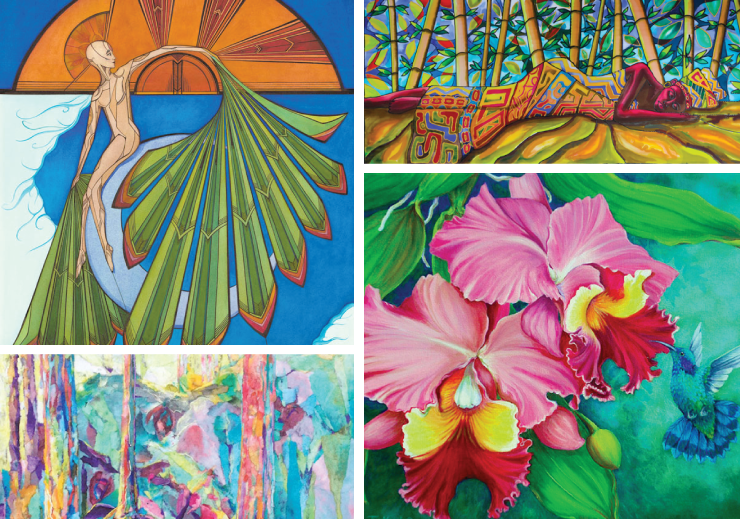
It's almost time for the May edition of the Westside Art Hop, a one-day day art walk around the Old West Side of Ann Arbor! This is the 8th iteration of this event, a neighborhood sale of art in homes, studios, porches, and yards, held in May and December.
It's an opportunity to find interesting handmade arts and crafts, while enjoying the neighborhood bordered by Liberty S., 7th St., Pauline St., and Eberwhite Woods. Participating artists specialize in painting, photography, glass, metal and wood sculpture, jewelry, cards, mosaics, and fiber arts.
Sara Wedell is a Production Librarian at the Ann Arbor District Library.
The 8th Westside Art Hop takes place Saturday, May 14, 2016 from 11-5 pm in the Old West Side of Ann Arbor. Free parking is available on the street and at Eberwhite School. Keep an eye out for Art Hop lawn signs to direct you to participating locations.
Review: ART NOW: New Directions in Contemporary Photography

On a recent Saturday afternoon, I had Ann Arbor Art Center’s 117 Gallery to myself. Between the FestiFools events and the arrival of the first real spring-like weather of the season, it was a perfect quiet time to take in some new art. I was at the gallery to see ART NOW: New Directions in Contemporary Photography—and I could view it at my own pace and in a space that allowed me freedom to see the work up close and from far away.
In hindsight, it was serendipitous that I was there on Eadward Muybridge’s birthday. Born almost 200 years ago, he was a pioneer in photography and used technology in new and exciting ways— perhaps most famously for using still photography to capture and convey motion and to reveal hidden realities.
Photography is the focus of this exhibit, juried by Wayne State University photography instructor Millie Tibbs, but many of the artists featured have combined traditional photography with other techniques, creating abstractions that conceal the methods with which they were made. These artists explore and overlay techniques, experiment with texture and color, and use visual elements that shift the scale in the mind of the viewer.
Maybe it’s my background in landscape architecture, but I was particularly intrigued by two pieces by photographer and U-M professor Seder Burns. Both "Suburban Camouflage Detection" #5 and #7 convey a sense of artificiality. The tree canopy shifted to an otherworldly red—conveying a sense that there is something inherently wrong. In "Suburban Camouflage Detection #7" (which was awarded second place in this exhibit), cookie-cutter beige architecture is organized in a relentless pattern in a space between water towers and a playground. Though this is entirely a man-made landscape, there are no humans to be seen, leaving the viewer with an uneasy feeling.
"DreamStart", a photograph by Horace Kerr II, appears from a distance as an alien industrial landscape or an experiment in postmodern architecture. The color palette of sickening orange and fluorescent green jumps off the wall and recalls imagery from a 1960s science fiction film. These colors draw the viewer closer to investigate. Only when seen at close range do the assembled objects in the photograph become clear in an unusual still life of a fluffy pillow and an upright egg.

John Sanderson’s "Perspectives (Interior and Exterior)" was named Best in Show for this photograph of a country road framed by an opening of trees and overlain with a smaller instant photograph of the interior of a bowling alley. The two images together in one composition contrast one another in a way that is at once jarring and harmonious. Though the perspective is the same, the photograph of the road reaches from darkness into light and the bowling alley transitions from light into darkness.
Brittany Denham’s "Western Vestige" is a striking composition that at first appears as though it is a piece of glitch art. Upon closer inspection, it is actually composed through the careful selection and placement of fragments from other landscape photographs. Using just the right colors and textures, Denham has invented a wholly new landscape that evokes the long views and big sky of the Great Plains.

Dean Kessmann’s "Details #1-6 (Nature’s Promise Organic Vegetable Broth)" is a series of inkjet prints, created in the spirit of his works of “Utilitarian Abstraction.” The viewer is confronted with six identical bold shapes of overlapping rough circles of primary colors with a large black organic shape at the center. When viewed closely, the edges are blurred and undefined. This work recalls aspects of the Color Field Movement in the work of Louis Morris or Helen Frankenthaler. Yet the use of primary colors also feels very much like Pop Art—especially when the viewer realizes that this particular pattern of colors has been dramatically enlarged from the printer’s marks on a label from Nature’s Promise Organic Vegetable Broth, made clear by the name of the work.
The bold simplicity of Steven Edson’s "Road Paint" is striking. The highly-textured black and white shapes are well balanced in their imperfection. The photograph recalls the work of abstract expressionist Robert Motherwell and his use of oversize black and white strokes. Again, closer investigation is required to fully grasp that this not a painting, but an image that captures roads and their markings as infrastructure.
The variety of scale, subject, and point of view in this exhibit and the ways in which the artists push the boundaries of a traditional medium, made the viewing this show an experience beyond what might be expected in a photography exhibit. This exhibition runs through May 14, so there’s still time to get over to the Ann Arbor Art Center to check it out.
Amanda Szot is a graphic designer in AADL's Community Relations & Marketing department.
"ART NOW: New Directions in Contemporary Photography" runs through May 14, 2016 at the Ann Arbor Art Center's 117 Gallery (117 W. Washington in downtown Ann Arbor). The gallery is open Monday–Friday from 10 am until 7 pm, Saturdays 10 am–6 pm, and Sundays noon–6 pm. Note: the 117 Gallery will be closed for private events on Tuesday, May 3 (closing at 4:30 pm); Saturday, May 7 (closing at 2 pm); and Saturday, May 14 (closing at 5 pm).
Preview: Totally Awesome Fest

Every spring in Ypsilanti, a beautiful community event blossoms. For 12 years now, Totally Awesome Festival has marked the true beginning of spring in Ypsilanti. Totally Awesome Festival is an annual celebration of music, arts, fashion, and pancakes.
The event traces its roots back to Totally Awesome House, once located at 724 N. Main St. in Ann Arbor (now demolished), which hosted the Totally Awesome Supper Club in 2004 and 2005, where one could see local and touring acts and dig into with great potluck food. When theTotally Awesome House-mates were told they couldn’t renew their lease, they threw a festival, the first ever Totally Awesome Festival, to celebrate the music and the spirit of the house, one where anything was possible.
The next year, Totally Awesome Festival II was held to commemorate the first festival and it has been going on ever since.
Most often falling on the last weekend of April, and with venues sprinkled among backyards, puppet theaters, riversides, and other dreamy locations, Totally Awesome Festival is a chance to enjoy the great music that happens all around Ypsilanti, Ann Arbor, and Detroit. It is always free, and open to all ages, and all species. For the 10th Totally Awesome Festival, the festivities ran for a whole week. For the 11th Totally Awesome Festival, events ran for 55 continuous hours. This year, the festival goes international, with some of the acts performing in Bangalore, India.
This year’s lineup of performers looks incredible and includes, Stef Chura (whose new album is coming out soon), Avery F, Bevlove, and Dykehouse. Totally Awesome Festival’s acts features singer/songwriters, punk, freak folk, neo soul, performance art, poetry, and of course, the annual Totally Awesome Take Home Fashion Show, an outpouring of free clothing curated from Ypsilanti Ann Arbor/Detroit fashion icons. Keep an eye on the public Facebook event as the schedule may change slightly.
So bring your family, bring your friends, bring your goldfish, bring anyone who is interested in music and art and community to this exciting annual event that is unlike any other. Take home some memories and take home some fashion and become part of this Ypsilanti ritual!
Shoshannah Ruth Wechter is a librarian living in Ypsilanti, and views Totally Awesome Fest as an annual holiday that is not to be missed.
The 12th annual Totally Awesome Festival kicks off Friday, April 29, 2016, at 12 pm and runs through the evening of Sunday, May 1, 2016, at venues throughout downtown Ypsilanti.
Review: Ann Arbor Symphony Orchestra's The Planets was Out of this World

Last Saturday, April 9th, the Ann Arbor Symphony Orchestra presented an excellent selection of music to a sold out Michigan Theater.
The evening opened with "The Tall-Eared Fox and the Wild-Eyed Man," a piece written by Ann Arbor composer Evan Chambers. Inspired by traditional jigs, the strings section started with a jaunty tone and then transitioned into different breakdowns of the music, ending with an experimental section that pushed the boundaries of the jig into a more traditional and modern place.

Mendelssohn’s Violin Concerto in E minor, Op. 64, featuring guest violinist Jinjoo Cho, was the second entry in the night’s concert. I was completely caught off guard by Cho’s tremendous performance, which was both technically complex but also emotionally packed. Her playing was simply astounding, breathtaking in the depth of emotion conveyed even as control of the instrument was maintained. I honestly don’t have the words to convey how absolutely delightful and absorbing Cho’s playing was. If Cho ever happens to visit Ann Arbor again, I would highly recommend attending. I will certainly be following her career with avid interest.

After a short intermission, the orchestra returned to perform Gustav Holst’s The Planets. Composed in 1917, this piece explores the character of each of the planets of the solar system, excluding Earth. Each character sketch is relatively quick, resulting in a piece that progresses quickly and holds the interest of even those unfamiliar with classical music. Even if you’ve never heard of The Planets, you’ve probably heard some clip of this influential and popular composition playing in the background of some piece of media.

The performance by the Ann Arbor Symphony Orchestra was a joy to attend. The Planets is a fun suite of music to start with, and the orchestra was clearly up to the challenges presented by the piece. Since the character of each planet is so distinct, I can only praise the A2 Orchestra for conveying a spectrum of emotions and concepts. From the jaunty "Jupiter, the Bringer of Jollity," to the strident and somehow playful "Uranus, the Magician," the A2 Orchestra rose to the occasion and delivered an exceptional range of musical experiences. I was familiar with The Planets going into the concert, and I was surprised at how much of a difference there was between the recordings I’ve listened to and hearing the music in person. There’s a bit of personality or a depth of emotion that recordings just can’t capture. The journey the music takes you on through the solar system seems somehow more real when you’re sitting in the same room as the musicians.
The visualizations paired with the music made for an interesting experience, slightly reminiscent of Disney’s Fantasia. Visual artist Adrian M Wyard created the accompaniment using both NASA images and digital recreations of the planets. Pairing the music with images added a layer to the performance that certainly captured your attention, but that could sometimes border on distracting. I was surprised at how well Holst managed to capture the essence of the planets, particularly those closer to Earth, in 1917, when our knowledge of the solar system was so much more limited than it is today.
Audrey Huggett is a Public Library Associate at the Ann Arbor District Library.


































